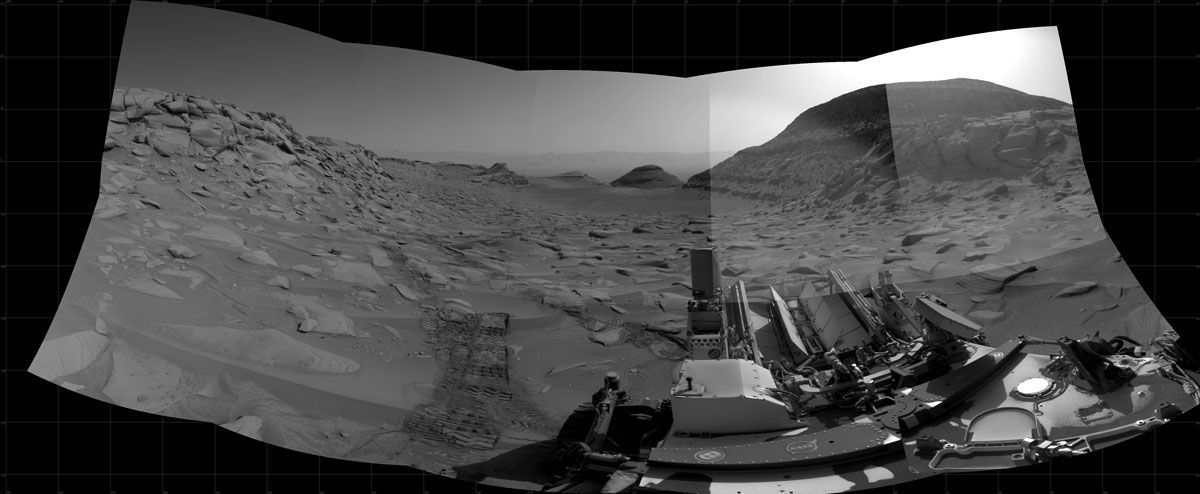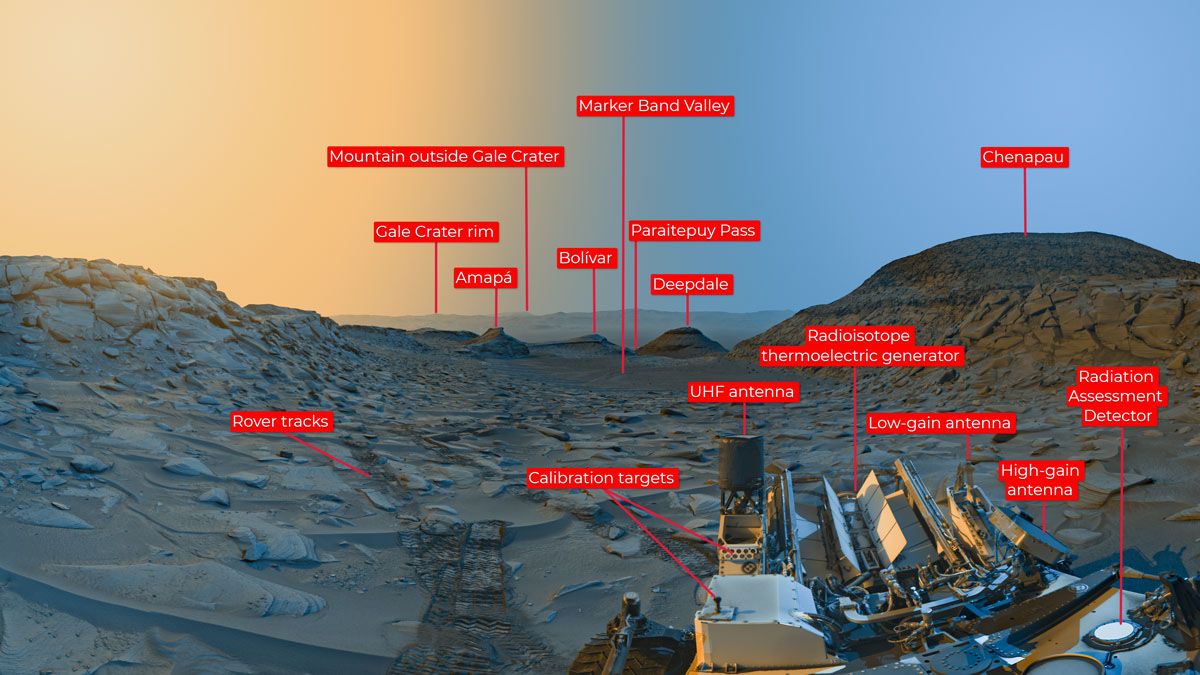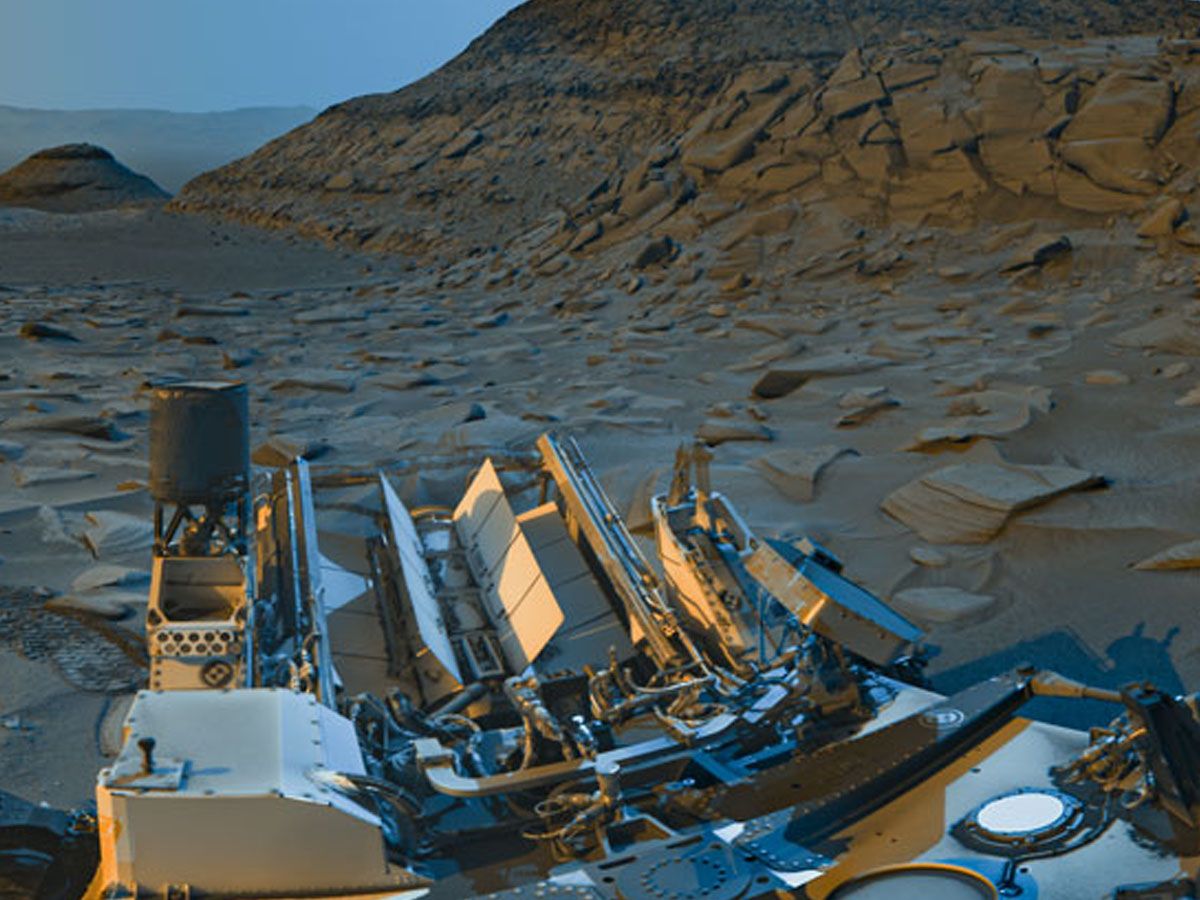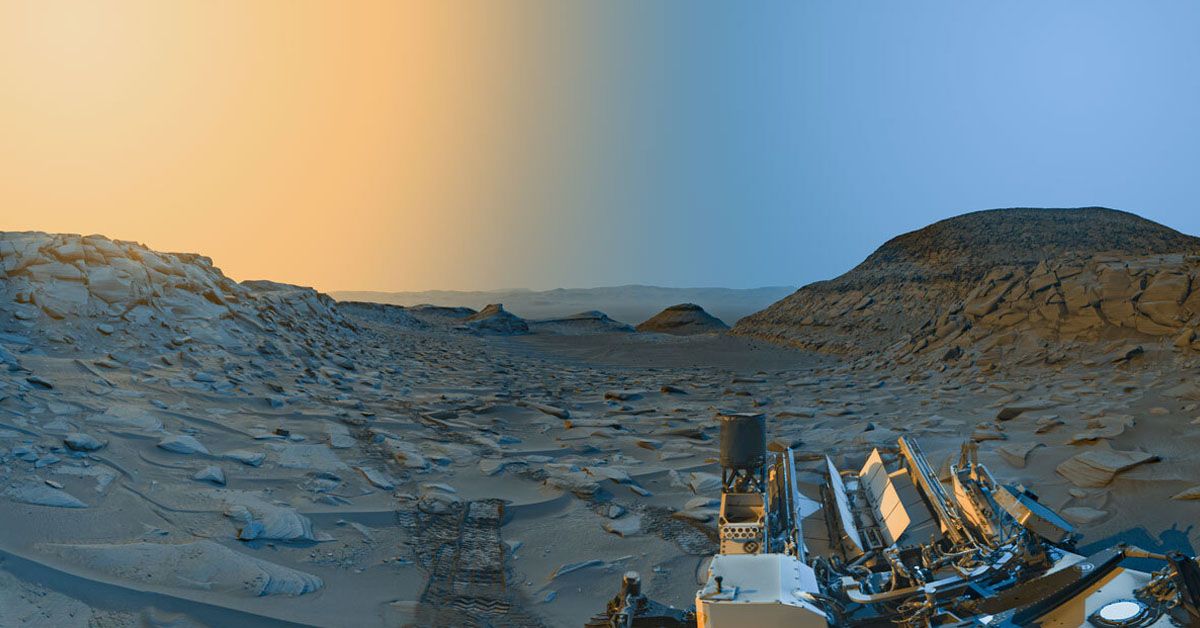NASA's Curiosity rover has gifted us with a breathtaking postcard image that takes us on a visual journey through Marker Band Valley.
With its black-and-white navigation cameras, Curiosity captured two panoramas at different times of day, revealing the mesmerizing lighting contrasts that paint this Martian valley.
But what secrets does this postcard image hold? What intricate details can we uncover about Marker Band Valley?
Lighting Contrasts in Marker Band Valley
Marker Band Valley, as depicted in the postcard image captured by Curiosity, unveils the captivating contrast between morning and afternoon lighting conditions.
The merging of two panoramas taken at different times of day reveals a striking interplay of light and shadows.

In the morning panorama, the sun's rays gently kiss the Martian terrain, casting a soft glow and illuminating the intricate details of the landscape.
As the day progresses, the afternoon panorama paints a different picture, with the sun's rays creating deeper shadows and accentuating the contours and textures of Marker Band Valley.
This stark contrast in lighting conditions brings the scene to life, offering us a glimpse into the ever-changing nature of the Martian environment.
Curiosity's Martian View
Perched on the flank of Mount Sharp within Gale Crater, Curiosity provides us with a unique perspective of Marker Band Valley.
Its position in close proximity to Curiosity's track marks allows the rover to offer an intimate view of this intriguing Martian feature.
Marker Band Valley resides within the sulfate-bearing region, an area of great interest to scientists.

It was here that Curiosity made a groundbreaking discovery—an ancient lake that once graced the Martian surface.
This revelation sparks our curiosity and raises questions about the potential for past life on Mars.
Features in the Postcard Image
As we delve into the postcard image, our eyes are drawn to the majestic hills dominating Bolívar and Deepdale.
These rugged formations, etched by the passage of time, stand tall, casting their elongated shadows on the Martian surface.
Their distinct shapes and rugged edges add a sense of grandeur to the landscape, further piquing our curiosity about their origins and geological history.
Moreover, the postcard image captures the presence of Paraitepuy Pass, a channel that winds its way through Marker Band Valley, leaving a lasting mark on the Martian terrain.

This channel serves as a testament to the powerful forces that have shaped the Martian landscape over millions of years.
The postcard image, with its deep shadows and varying levels of light, also provides insight into the seasonal changes on Mars.
The pronounced shadows are a result of the winter season at Curiosity's location, coupled with lower levels of airborne dust in the Martian atmosphere.
This combination creates a visual spectacle, highlighting the subtle nuances and intricacies of Marker Band Valley's topography.
Each shadow, every contour, tells a story of the Red Planet's geological evolution, captivating our imagination and enticing us to unravel its mysteries.
Unveiling Curiosity's Perspective
As we immerse ourselves in the postcard image of Marker Band Valley, we can't help but marvel at the presence of NASA's diligent explorer, the Curiosity rover.
The image offers us a glimpse of Curiosity's visible parts, which serve as a testament to the rover's advanced technology and purposeful design.
Standing tall against the Martian landscape, the antennas allow Curiosity to communicate with Earth, transmitting valuable data and images from its ongoing mission.
Beyond the antennas, our attention is drawn to the nuclear power source, which provides the rover with the necessary energy to operate in the harsh Martian environment.
This cutting-edge power source ensures that Curiosity can conduct scientific investigations, even in the face of harsh conditions and limited sunlight.
Among Curiosity's visible instruments, one stands out: the Radiation Assessment Detector (RAD). Represented as a white circle in the postcard image, RAD plays a crucial role in studying the radiation environment on Mars.

Its presence is not merely scientific curiosity. Rather, it serves as a vital component in preparing for future manned missions to Mars.
Understanding the radiation levels and potential hazards that astronauts may encounter is paramount in ensuring their safety during these ambitious exploratory endeavors.
RAD collects valuable data, shedding light on the Martian radiation environment and enabling scientists to devise strategies to mitigate its impact on future human missions.
By studying and analyzing these data, NASA aims to develop robust systems and shielding mechanisms to protect astronauts as they venture into the vastness of space.
As we admire Curiosity's presence in the postcard image, we are reminded of the pioneering spirit that drives human exploration.
Curiosity's antennas, nuclear power source, and Radiation Assessment Detector symbolize our relentless quest to unravel the mysteries of Mars and pave the way for future human missions to this intriguing planet.
Sources: nasa.gov












